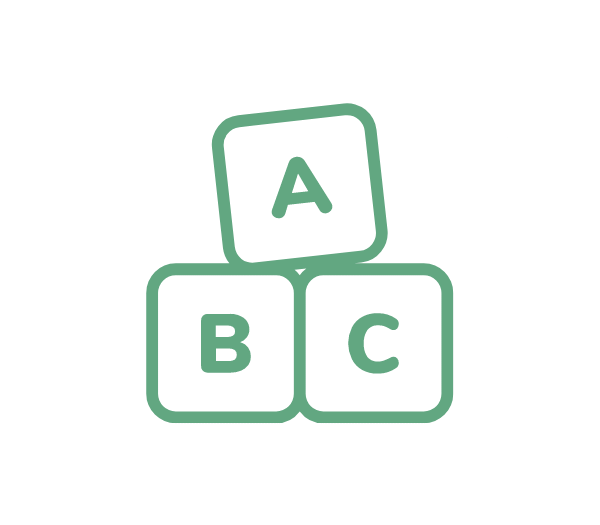
Toy and play information
Children aged
6 to 9 months
At this age your baby is starting to explore whilst learning about the world around them.

Play ideas
Exploring books
How does it help the baby?
Boosting my baby’s senses
Tips:
- Looking at different images or pictures
- Learning to use both hands to turn pages
- Feeling different textures
- Listening to what you say (building vocabulary)
- Developing language and shared attention
Scroll down to read more.
Staking rings and taking objects out
How does it help the baby?
Helping my baby with their coordination
Tips:
- Practising grasp and release
- Solving problems and learning through moving/placing objects
- Coordinating hands and eyes
- Learning to put objects in and out of containers
Scroll down to read more.
Water play
How does it help the baby?
Helping my baby learn through multisensory experiences
Tips:
- Playing with water provides lots of different sensory experiences (bath, paddling pool, or just a plastic bowl of water)
- Using cups with holes at the bottom, plastic bottles for pouring and squirting
Note: Never leave your baby alone with water.
Scroll down to read more.
Balls
How does it help the baby?
Helping my baby getting ready to crawl
Tips:
- Enjoying exploring
- Learning to reach while on all fours to improve balance and initiate crawling
Scroll down to read more.
Musical instruments and interactive games
How does it help the baby?
Helping my baby with their interaction skills
Tips:
- Learning turn taking (make a noise and wait for your baby to copy you)
- Playing interactive games such as “pat a cake” “itsy-bitsy spider”
Scroll down to read more.
Did you know?
Instruments don’t need to be complicated or expensive – if you can shake it, bang it, rattle it and make noise, it’s an instrument!
Tips and ideas
Building skills
Promote crawling – Create an interesting floor space to encourage movement. Move toys around.
Promote language by naming objects – Help your baby identify objects by name: “this is your cup”; “look, here is Teddy!”
Looking and finding – Show your baby a toy and then hide it under a blanket or behind another toy. Promotes movement and learning.
Things to remember
Action toys with buttons – Cause and effect toys are interesting at this age. Helps with hand-eye coordination.
Playful surprises – Promotes interaction between you and your baby.
Social and emotional growth – Your baby will begin to use emotions in an interactive, purposeful manner, such as getting your attention through shouting and gestures.
Keep your baby safe
Prevent burns – Babies of this age love reaching. Keep hot drinks well out of reach and be aware of other hazards.
Avoid “sit-in” baby walkers – They may delay walking and can be dangerous. Some baby walkers may tip over causing your baby to fall out. Read our advice on baby walkers.
Only use safe toys to avoid choking – Children of this age love putting toys in their mouth. Ensure all toys are suitable and safe for young children.
Did you know?
Babies learn by moving, exploring and doing things. The more they move the more they learn and the more they learn the more they move. Movement is important.
The advice on this page has been created by B. Hutchon and S. Powell, Royal Free London, together with Dr. A. Fernandez, Neonatologist San Jose Hospital, Chile.

